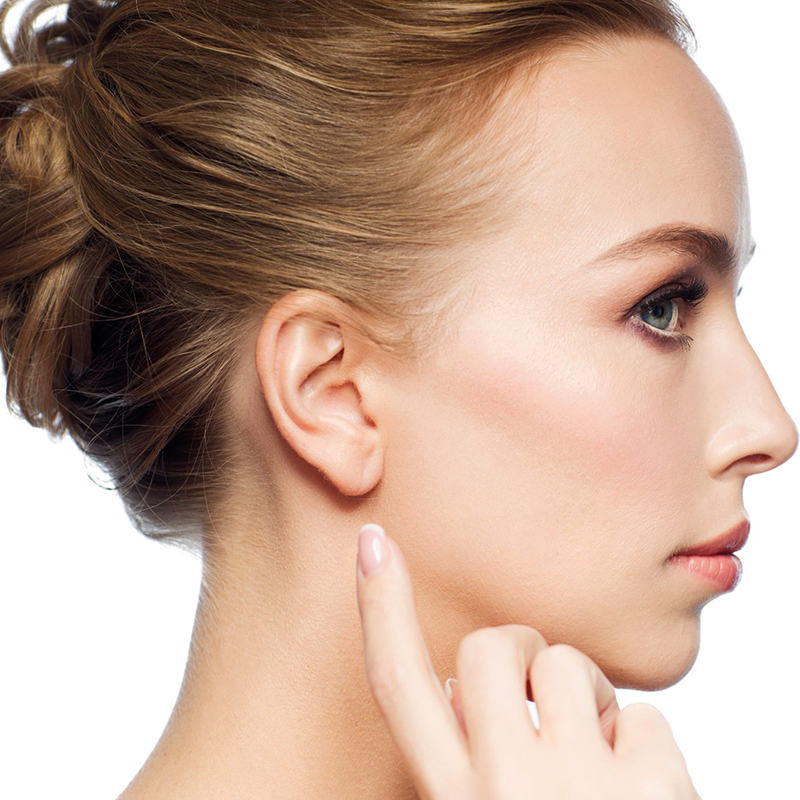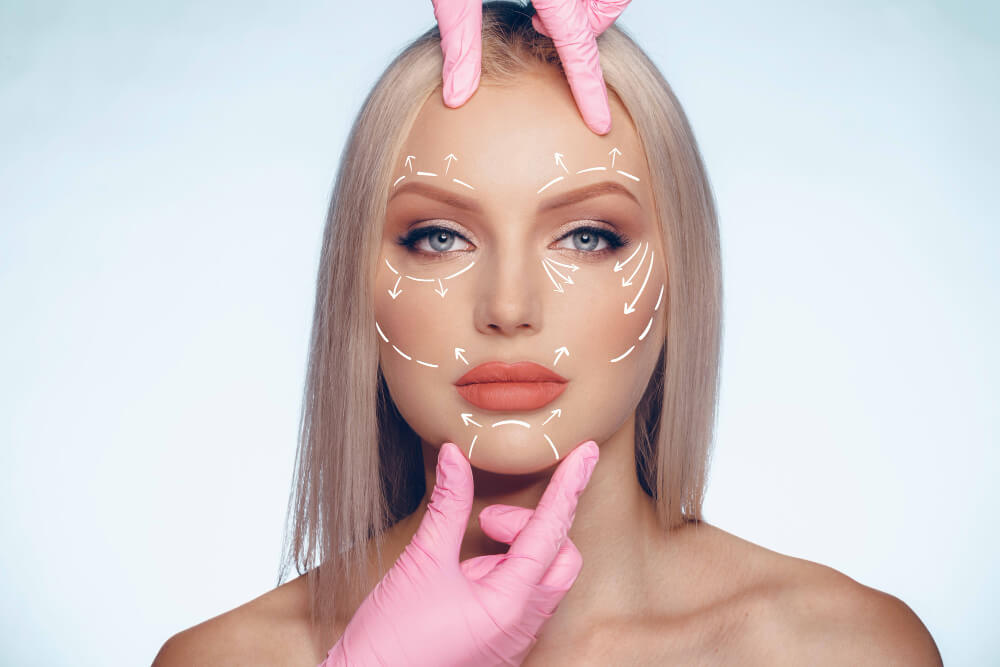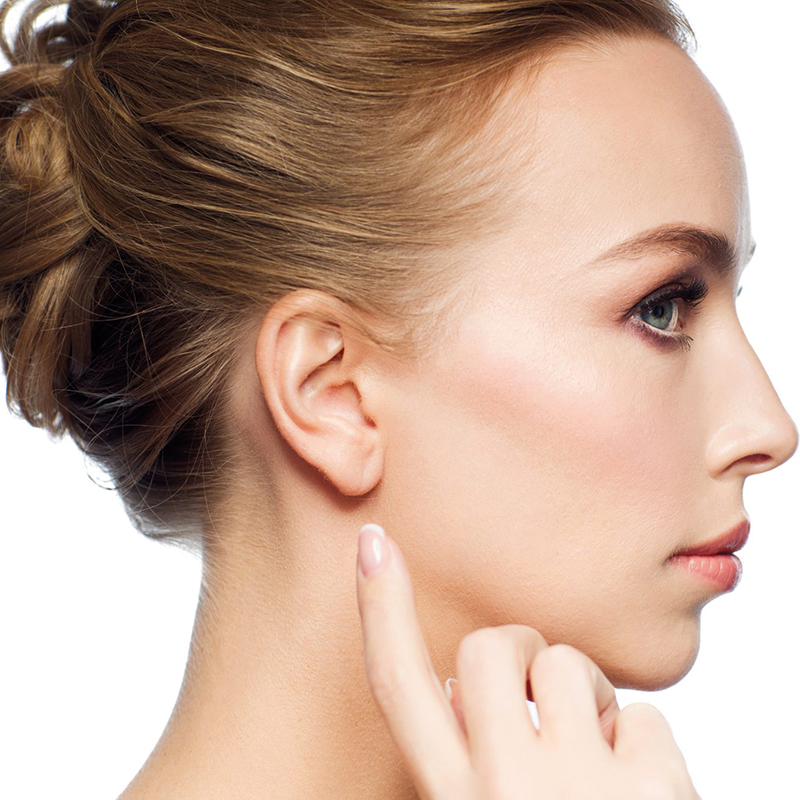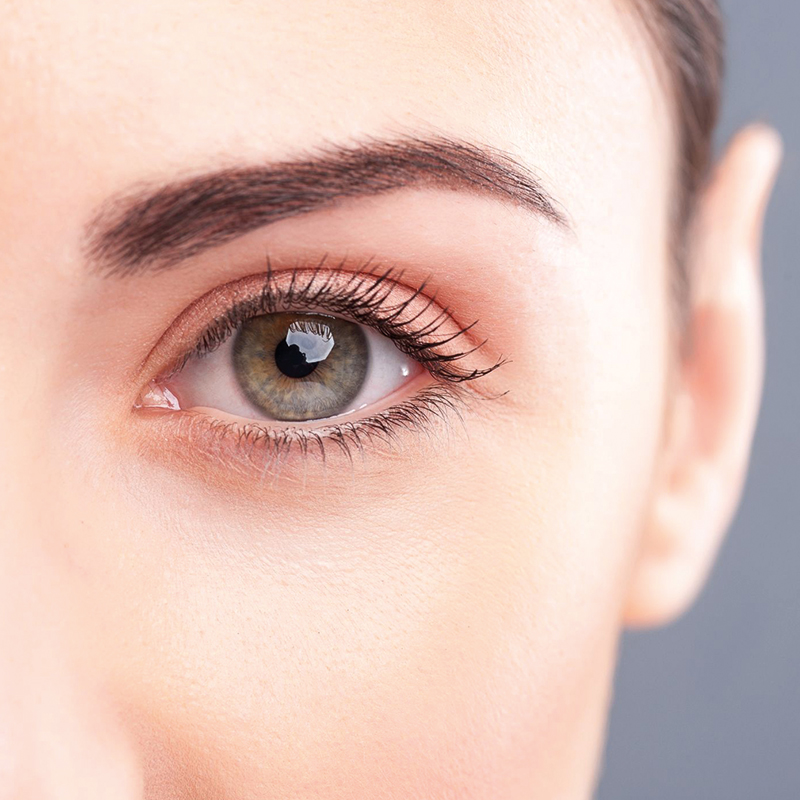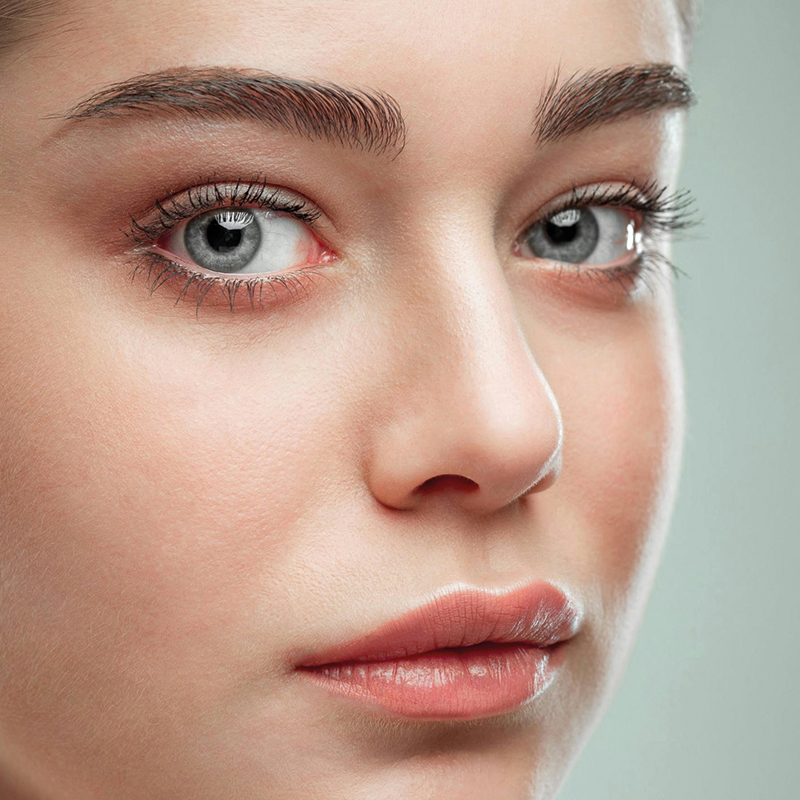What is Prominent Ear Aesthetics?
From childhood age, many people feel unhappy by being caught by the size or shape of their ears. People complain that their ears are too big, asymmetrical or drooping. These people can cover up the irregularities in their ears with their long hair, but this is a temporary solution. In some cases, the shape of her ear can turn into an embarrassing situation for women, especially when it comes to jewelry and earrings. In the face of this situation, prominent ear aesthetics is a way of salvation for most people. It is usually caused by the loose cartilages in the ear area or insufficient ear folds. For these reasons, the ear, which has a loose structure, stands bent forward or sideways, causing an unpleasant appearance. Although it is usually seen in both ears, in some people only one ear looks like a prominent ear.
Decision Process Before Prominent Ear Surgery (Aesthetics)
Before ear aesthetic surgery, the condition of the ear and the changes that will occur in the ear after surgery are explained. Photographs of previous surgeries are shared with the patient and the changes that will occur in the patient after the operation are conveyed. The methods to be used in surgery and their treatment are explained. After the person to be operated on decides to have surgery, the preoperative preparations and remaining stages are explained to the patient in detail and the operation is started.
The Process Before Prominent Ear Surgery After the Decision Stage
Preliminary examination should be done before the operation. After this examination, the doctor will tell you whether prominent ear surgery is suitable for you. If the decision of surgery is taken, he will explain the operation procedure to you in detail. This talk will likely include details about the type of anesthesia, the patient’s medical history, and the cost of the surgery. This first examination day is the best time to learn about the benefits of prominent ear surgery and the possible risks of the operation.
- Aspirin use should be discontinued at least two weeks before surgery for all patients. Stopping of smoking and tobacco use is also strongly recommended by physicians.
- If there will be lost work or school preparations, it would be useful to direct a person to deal with these situations.
- Patients who will undergo general anesthesia on the day before the operation should not eat or drink fluids the night and morning before the operation. The dinner before the operation should be very light. However, someone should be organized to bring you home from the hospital and assist with first night care.

Tests to Be Applied Before Surgery
Before prominent ear surgery, the patient undergoes a series of routine controls consisting of clinical examinations and tests. After all tests, including blood tests, are done, the details of the operation can be discussed with the patient. In order to obtain correct results from preoperative examinations, the patient is informed that drugs such as aspirin, andol or acisal should not be taken. Examinations vary depending on the patient’s age, health, specific procedure and type of anesthesia. If general anesthesia will be applied, tests such as anemia, coagulation disorders and hepatitis c should also be applied. If there is a possibility of pregnancy, a pregnancy test will be applied.
Blood Test
A blood test is essential before any surgery involving general anesthesia. However, a hemoglobin and pregnancy test is usually done. If local anesthesia is being administered and there is a bleeding tendency or other medical conditions that prevent the person from undergoing the procedure, a blood test may not be performed.
Anesthesia Control
While a sedative and local anesthesia is usually applied for adults in prominent ear surgery, general anesthesia is applied for children, especially if they are younger than 8 years old or not prone to cooperation. The anesthesiologist will take the medical history of the patient before the surgery and decide what anesthesia will be applied.
Physical Examination
A physical examination will be done by your doctor to determine your treatment options. In this examination, the placement of ears, sizes, shapes and symmetries of ears will be examined.
The general size and shape of the ear is evident in a normal state, and the presence of abnormalities is determined during a physical examination. After a thorough physical examination and detailed analysis, the procedure is customized according to patient characteristics. The surgeon determines aesthetic goals, birth defects, traumatic deformations, and makes the final decision on how the surgery will be performed.
Cigarette and Alcohol Consumption Before The Surgery
Patients should stop smoking and using tobacco products before surgery. Smoking will compromise healing and increase the risk of infection. It can be harmful to be with smokers as well as smoking. Pre-operative smoking can cause problems such as irregular scarring and delayed healing. You should stop smoking two weeks before the operation and continue this until the third week after the operation.
Nutrition and Diet Before The Surgery
While you should always eat a healthy diet, you will need to pay more attention to nutrition for a certain period of time before prominent ear surgery. If you enter the surgery with an unhealthy diet, your body will not be able to get the nutrients and vitamins it needs to heal properly, and the healing process will be prolonged. Some patients experience loss of appetite and difficulty eating in the first few days after their surgery. For this reason, it is important that you are well nourished in the weeks before surgery.
How To Perform Prominent Ear Operation?
Prominent ear surgery is an operation performed under general anesthesia for young patients. In adult patients, after sedatives are given, local anesthesia is applied and the operation is started.
- The operation ends after 30 minutes to 120 minutes as long as it proceeds as planned.
- During the operation, a small piece of skin is first removed from the back of the auricle. In order to achieve the ideal fold, the appropriate points to be stitched are marked and determined.
- Then, the ear cartilages are rasped as determined and made to be curled at ideal points. In order to adjust the angle between the head and the ear correctly, stitches are placed between the head bone membrane and the ear base.
- Then, the points determined at the beginning of the operation are stitched and the new shape of the ear is given.
What Are The Prominent Ear Surgery Methods?
Prominent ear surgery is a surgical operation performed to eliminate the aesthetic concerns of people of all ages and genders. Ear aesthetics, which is a very easy operation, can be corrected permanently with different techniques depending on the size of the deformation in the auricle. These methods are, prominent ear aesthetics with thread (non-surgical), prominent ear aesthetics with laser and other surgical methods.
Threaded (Non-Surgical) Prominent Ear Aesthetics
Prominent ear aesthetics with thread can be applied to people whose auricle has suffered a small deformation. It is a very easy and simple technique. Although prominent ear surgeries performed with thread are much more comfortable, no incision is performed. In this way, bruises and marks do not occur in the patient’s ear. At the same time, less redness and swelling occurs compared to ear aesthetic operations where surgical methods are applied.
Prominent Ear Aesthetics with Laser
Prominent ear operations performed with laser have gained great popularity in recent years. In these operations, incisions are made with the help of laser. At the same time, deformations in the ear cartilage are corrected with laser. In this way, possible complications and errors during the operation are minimized. Prominent ear aesthetics with laser is the most preferred ear aesthetics method of recent times.
Prominent Ear Aesthetics Applied by Surgical Ways
In prominent ear aesthetic operations performed by classical surgical methods, no incisions are made in the visible parts of the ears of the patients. Usually, a 3 cm vertical incision is made at the back of the ear. The ideal shape is given to the ear cartilage by entering through this incision and this shape is fixed with the help of permanent stitches. Self-melting stitches are placed in the incision behind the ear. In this way, there is no need to repeat stitches.
What Are the Recommendations for the Day of Surgery?
It is important to know exactly what time you need to reach the hospital on the day of surgery and how much time you will need in the preparation process. Bring all forms and documents with you before surgery. Wear comfortable clothes that will not require you to pull off your head on the day of surgery. Leave your jewelery and valuables at home. Remove all your makeup with a cleansing cream. Wash your face thoroughly with soap and water. Do not apply any cream to your face and head on the day of surgery. Take a shower in the morning and don’t braid or pin your hair. Men should have a haircut before the operation to allow the operation.
Do not take any medication on the day of surgery unless your doctor or anesthesiologist wants you to take it.
After The Prominent Ear Surgery (Aesthetics)
After the operation, a slightly bulky bandage is wrapped around your head, covering your ears completely. This will be tied a little tightly to allow for dressing. Braids and shampoos will be an issue until the bandages are removed. Your doctor will not allow the area to get wet until the bandages are removed.
It is normal to feel temporarily blocked in your ears after surgery. If pain increases after the first 48 hours after surgery, if your fever is high, the bandage slips or falls significantly, reach your doctor immediately.
What Are The Risks And Side Effects?
Prominent ear surgery has a short recovery period compared to many surgeries and is a safe surgical procedure for many patients. However, like any surgical application, prominent ear surgery also includes some risks. The probability of complications during this treatment or as a result of the surgery is generally low, but it cannot be said that there is no risk.
Make sure you take the following precautions to reduce the risks of prominent ear surgery:
- Take a complete health check-up to get information about your health condition.
- Inform the doctor about the regular medications you take and follow the advice he gives.
- Do not use blood thinners such as ibuprofen and aspirin before surgery.
- Avoid tobacco products and alcohol for 2 weeks before surgery.
Infection
Signs of infection after prominent ear surgery may be redness, tenderness, swelling, pain and discharge. High fever is also an indication of a possible infection. Make an appointment to show your doctor if you are worried about developing an infection.
Trace of Surgery
It is normal to have a scar after prominent ear surgery. The scar is initially bad looking, but doctors recommend allowing the wound enough time to heal. Doctors recommend that the wound be left alone for 2-3 weeks after cleaning and wrapping.
After the open wounds heal, creams containing liquid oxygen, vitamins, silicone and cortisone can be safely applied to reduce the surgery scar. If cortisone is regularly applied to the area where the scar is located, the surgery scar will get smaller in a few weeks.
Allergical Reaction
Like other major surgical operations, prominent ear surgery also carries the risk of bleeding, infection, and allergic reactions to anesthesia. After the surgery, your ear may have an allergic reaction to the sewing thread or headband. Since some allergic reactions can occur even months later, follow-up examinations are recommended at intervals of up to one year. If the patient has a previous history of keloid scar formation, she should be informed about the increased risk of allergic reactions. In addition, these patients should be applied a wound ointment that prevents excessive collagen synthesis in the wound area.
Things to Consider
It is necessary to stop the use of aspirin and similar blood thinners within 1 week before the operation. However, in case of a serious illness, it is important to take a break with the approval of the doctor.
Some multivitamin complexes, vitamin E and zinc-containing drugs may also cause an increased tendency to bleed. These tablets should not be used in the preoperative period.
Taking A Shower
You can gently wash your hair and ears with soap, shampoo and water 1 week after prominent ear surgery. When washing your hair, use your fingertips and massage gently with soap. Take care not to wet the stitches. Since the stitches are already located in a difficult-to-reach area, it will be sufficient to pay attention to it.
Dressing
It is common for a small amount of fluid draining from the ears while medical dressing. If you see water coming out of your ears, don’t worry. The liquid may be dark in color. If a dark liquid comes out, you can use cotton swabs and oxygenated water to clean the outside of the ear. However, be careful not to enter the ear canal during this procedure. If there is excessive water flow, contact your doctor.
High and Low Pressured Environments
After prominent ear surgery, your ear will be more resistant to pressure. In order to reduce the effects of the air pressure on your ears, you should not open your mouth too much, should not chew gum, or not to travel by plane along the first few days.
How Much Does Prominent Ear Aesthetics Cost?
With the reason of Ministry of Health and Competition Board, we cannot give you information about Prominent Ear Aesthetics Costs on the web site. You can request detailed information via phone, Whatsapp or e-mail.
The prices of prominent ear surgery may vary depending on the doctor who will perform the surgery, the insurance coverage of the application, the method of payment, the drugs to be used, the examinations to be applied, the operating room and the scope of the surgery, the type of anesthesia, the services to be provided before and after the surgery.
If you are over the age of 18, Social Insurance Institution will not cover the cost of the surgery.

 FR
FR ES
ES IT
IT DE
DE RU
RU PT
PT AR
AR RO
RO BG
BG MK
MK IL
IL GR
GR ID
ID SK
SK JP
JP CN
CN PL
PL